The chronology
that follows covers the final ten years of John Cassavetes' life and
the nineteen years following his death. To access a chronology and
list of events covering the first forty years of Cassavetes' life, from
1929 through 1968, click
here.
To read more
about many of the events described below, go to the "About Ray
Carney" and the "Ray Carney's Discoveries" sections of
the site (in the left menu on this page) and the associated links. All
of the books and articles by Prof. Carney that are mentioned can be
purchased via the "Bookstore" link (also in the left menu
on this page).
1979-1990
/ 1990-1995
/ 1996-2000
/ 2001-2005
/ 2006-2007
Page
1 < 2
Click
here for best printing of text
A
Chronology of Cassavetes - related Events, 1979 - 2007
1979
January: Ray Carney mounts a complete retrospective of
"the films of John Cassavetes" in a course at Middlebury College in Vermont. All of the works directed
by Cassavetes are screened along with Elaine May's Mikey
and Nicky. Prints of five of the films, including both versions
of The Killing of a Chinese Bookie and the unreleased Opening
Night, are specially provided by the filmmaker for the event. In
the process of assembling the shipment Cassavetes discovers that he
has lost his only remaining 35mm print of Shadows. It has apparently
not been returned from a previous booking years before. He borrows a
copy from the National Film Archive in New Delhi, India and has it shipped to him and copied
in time to screen.
Spring: Cassavetes completes One Summer
Night for MGM, as a vehicle for Ricky Schroder.
The script will eventually become Gloria. Cassavetes regards
it as hack work and has written it strictly to sell. When he is offered
the chance to direct it, he is reluctant, but agrees as a favor to Rowlands
when she is offered the lead after Barbra Streisand turns it down.
Spring: Cassavetes' father dies.
December: Postproduction on Gloria is
complete. Columbia does not like the film. Cassavetes
is convinced that they do not intend to release it.
1980
Summer: New York's Museum of Modern Art mounts a retrospective of Cassavetes'
work.
November: Susan Streitfeld mounts a three-act play by Cassavetes called East/West
Game at the Callboard Theater in Los
Angeles.
It stars Cassavetes' son Nicholas Cassavetes and Sandy Martin as the
female lead. The production receives negative reviews, partly due to
its four-hour running time and closes after a brief run.
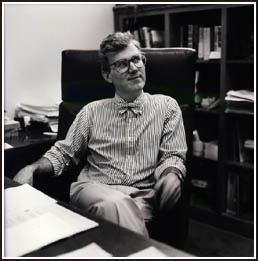 1980-1988
1980-1988
John Cassavetes corresponds
with Ray Carney by letter, on the telephone, and, near the end of the
period, in person. According to Carney, Cassavetes is extraordinarily
kind, thoughtful, and generous with his time and stunningly free and
open in discussions about his life and work. He writes to Carney giving
his views on art and life, reads excerpts from his work to him, shows
him the manuscript of his unpublished Husbands novel, tells
candid and revealing stories about his life, friends, and family, gives
him new information about how the films were created (including major
revelations about the making of Shadows and information about
the two versions of the film), gives him copies of otherwise unavailable
scripts and other writing, comments on Carney's books and essays, and
generally encourages him and assists his research in every way possible.
Cassavetes' personal assistants, Richard Kaye and Robert Fieldsteel,
are also extremely kind and generous with their time. (Click
here to read a section of an interview where Prof. Carney talks
about how he got to know Cassavetes in the final decade of his life.)
1981
Winter: Cassavetes makes preparations to mount
an omnibus dramatic series called Three Plays of Love and Hate.
He leases space at the California Center for the Performing Arts, rehearsing
three plays simultaneously: Knives, The Third Day Comes,
and Love Streams.
Summer - Fall: Cassavetes goes on location to act
in Paul Mazursky's Tempest.
1983
Spring: Cassavetes' mother dies.
Summer: Cassavetes films Love Streams.
Fall: Cassavetes produces and workshops
friend Meade Roberts' play Thornhill.
1984
February: Love Streams plays at the
Berlin Film Festival and wins the Golden Bear for Best Picture.
Spring: Cassavetes takes over the filming of Big Trouble. He is allowed minimal input into the production. Columbia is unhappy with the final product. Michael Ventura completes Cassavetes Directs, a "making of" book about Love Streams commissioned by Cassavetes and paid for by Cannon Pictures. Though the manuscript contains a number of interesting anecdotes about Cassavetes' working methods, it has very little perspective on the man behind the films. It idealizes him and his methods and is part of the early "hero-worship" phase of writing on Cassavetes. It is indicative of the low esteem with which Cassavetes' work is held in his lifetime that no publisher shows serious interest in the book. It is not published during Cassavetes' lifetime. (See page 5 of the Chronology, accessible via the blue menus at the top and bottom of this page for more on this.)
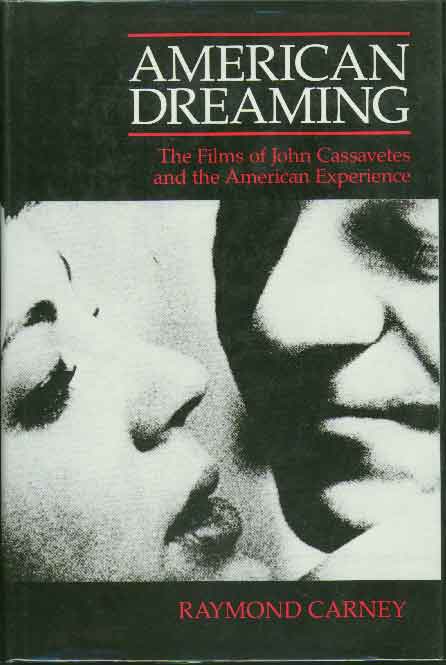 1985
1985
March: Ray Carney's American Dreaming: The Films
of John Cassavetes and the American Experience, the first book devoted
to Cassavetes' work, is published by the University of California Press,
five years after the manuscript was completed, after being passed on
by previous publishers on the grounds that Cassavetes is not an important
enough director to merit a book. Cassavetes receives an advance copy
and reads parts of it out loud to his staff. He tells Ray Carney about the book in a letter: "You've found me out in my films."
September: Freundlich
Books commissions a biography of Cassavetes from Ray
Carney. Carney begins researching and writing it, but when Cassavetes
tells him he is uncomfortable with such a work being published in his
lifetime, Carney honors his wishes and kills the project.
1986
January: Ray Carney mounts a second retrospective of
the films of John Cassavetes at Middlebury College in Vermont. Cassavetes provides his personal
copies of six prints for the events: Shadows, Faces, A
Woman Under the Influence, both versions
of The Killing of a Chinese Bookie, and the still unreleased
Opening Night. Cassavetes is invited to attend, but declines
due to problems with his health.
Spring: Big
Trouble is released. Many critics praise the film as Cassavetes' best
work.
1987
January: Laurence Gavron and Denis Lenoir's French - language John Cassavetes
is published by Editions Rivages in Paris. The book contains a large number
of factual mistakes about Cassavetes' life and work.
Spring: Woman
of Mystery is performed.
Summer: Cassavetes talks to Ray
Carney about making Shadows, about collaborating with
Robert Alan Aurthur on the scripting of the
second version, and describes the loss of the first version. Carney
begins his search for the print. Click
here for a discussion of the difference between the first and
second versions of Shadows and click
here for a year - by - year account of Carney's search for the lost
movie.
 1987 - 1988
1987 - 1988
Rowlands leaves a sick Cassavetes
alone in Los Angeles in order to go to New
York and act in Woody Allen's Another
Woman. She remains away for almost a year. Cassavetes is lonely
and miserable and bitterly complains about her absence.
1988
Spring: Maria Viera mounts a week - long retrospective and discussion of Cassavetes'
directing work at the California State University at Long Beach. Rowlands, Bogdanovich, and Cassel attend and participate, but Cassavetes
is too ill to attend. Excerpts from the panel discussions and post - screening
question and answer sessions are subsequently published in the "John
Cassavetes Special Issue" of Postscript magazine, Volume 11,
number 2 (Winter 1992), organized and edited by Ray Carney. It is available for sale on his web site.
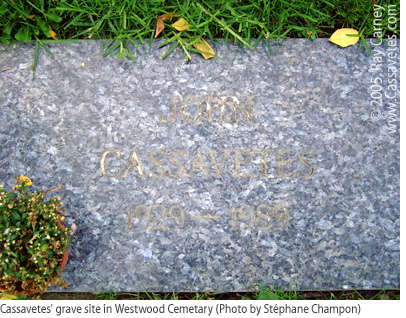 1989
1989
January: As news of Cassavetes' impending
death spreads, the United States Film Festival
(the precursor to the Sundance Film Festival) and Rotterdam Film
Festival rush to mount retrospectives. Cassavetes is invited to both,
but is too ill to attend. Ray Carney provides his personal print of Minnie
and Moskowitz for screening at Sundance when it is discovered
that no other screenable print exists. He
also contributes the keynote essay "Waking
Up in the Dark: Learning from John Cassavetes," for the Sundance
Film Festival program.
January: Cassavetes is rushed for emergency
treatment to Cedars-Sinai Hospital in Los Angeles.
February 3: Cassavetes dies at the age of 59
of cirrhosis of the liver. At the time of his death, the importance
of his directorial career remains largely unrecognized by American film
critics, reviewers, intellectuals, and academics. Excluding the work
of Ray Carney, there is not one piece of serious,
scholarly writing about him in English. His work does not merit more
than a passing mention in standard film history texts, and no major
American scholarly journal has published an essay about his life or
work. None of his independent films is available on video in the United States. He is remembered, if at all, for his acting career, most
notably for his appearances in Rosemary's Baby and The Dirty
Dozen.
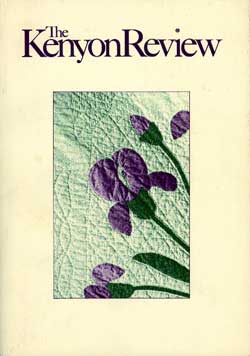 February
- September: Ray Carney contacts more than fifteen American
newspapers about contributing a "retrospective" feature piece on Cassavetes'
life and work, and more than ten American film magazines and scholarly
journals about organizing a John Cassavetes "memorial issue." He
is turned down by all but two on the grounds that Cassavetes is not
an important enough director to merit that sort of treatment. The two
positive responses are from Film Comment and The Kenyon Review. The first creates a "John
Cassavetes Midsection" in its May - June 1989 issue, to which Carney contributes
two essays - one an overview of Cassavetes' films, another a discussion
of his unfinished work, based on the unproduced
scripts and prose pieces Cassavetes gave Carney before his death. The
second publishes a memorial essay written by Carney. Both pieces are
available for sale on his web site.
February
- September: Ray Carney contacts more than fifteen American
newspapers about contributing a "retrospective" feature piece on Cassavetes'
life and work, and more than ten American film magazines and scholarly
journals about organizing a John Cassavetes "memorial issue." He
is turned down by all but two on the grounds that Cassavetes is not
an important enough director to merit that sort of treatment. The two
positive responses are from Film Comment and The Kenyon Review. The first creates a "John
Cassavetes Midsection" in its May - June 1989 issue, to which Carney contributes
two essays - one an overview of Cassavetes' films, another a discussion
of his unfinished work, based on the unproduced
scripts and prose pieces Cassavetes gave Carney before his death. The
second publishes a memorial essay written by Carney. Both pieces are
available for sale on his web site.
May 1989 - September 1990
Under the sponsorship
of the Walker Art Center and Pacific Film Archive, Ray
Carney organizes the American national tour of the complete
films directed by Cassavetes along with Elaine May's Mikey and Nicky. To support the events Carney
creates an 8 - page souvenir program and 88 pages of program notes, gives
lectures, and organizes and moderates panel discussions with members
of the films' casts and crews and friends of Cassavetes. The program
travels to fifteen cities. Attendance and audience response are strong
but the series receives little or no press coverage. Click
here to read the eight-page program Ray Carney wrote for the tour.
During the planning
stages of the retrospective, Bruce Jenkins at the Walker Art Center commits to publishing an early version
of Carney's Cassavetes on Cassavetes to accompany the screenings,
but due to costs Jenkins changes his mind and decides against publishing
the text at the last minute. No American publisher is interested in
picking up the project. In the course of the next ten years, Carney
gives away more than a hundred free Xerox copies of the manuscript to
anyone who requests it. A black market grows up in which more than 1000
other copies are pirated and passed from hand to hand by young actors
and directors. (Click
here to read a humorous account of the pirating of an early
draft of Carney's Cassavetes on Cassavetes manuscript.) Meanwhile,
Carney continues to revise and augment the text as he discovers new
facts.
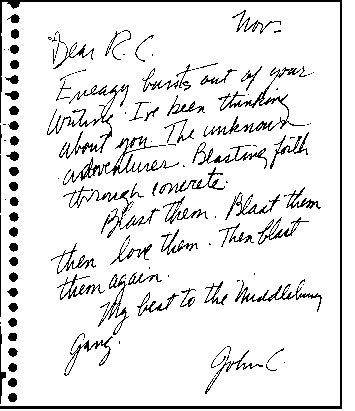 1990 - present
1990 - present
Between 1990 and
the present, Ray Carney plans, organizes,
and participates in more than 100 Cassavetes screenings and events in
America.
In
the years following the filmmaker's death, on a variety of occasions
and events, Gena Rowlands presents a relentlessly
upbeat version of her husband's life, denying that Cassavetes ever experienced
a negative emotion, was disappointed with the reception accorded the
films, or was depressed about personal problems or his inability to
secure backing for new productions. She also refuses to discuss his
life with her, making it a condition of all interviews that his personal
life or their marriage is not to be gone into. When biographers approach
her, she refuses to provide any factual information whatsoever and declines
to help them in any way, telling them that she does not want anything
written. She asks family and friends to check with her before agreeing
to interviews.
Over the course of
the next fifteen years, Ray Carney offers to assist
Rowlands in publishing Cassavetes' personal papers, unproduced
works, screenplay drafts, and play texts, to help her make arrangements
to deposit them in a film archive or library, or to assist her in otherwise
making them available for scholarly use. He offers to advise her and
contact publishers on her behalf. She declines all of his offers and
keeps the work suppressed and unavailable.
Carney makes a special
appeal that Rowlands publish Cassavetes' Husbands novel or make
it available for scholarly study. She expresses her desire to suppress
it and keep it from being read.
Former producer Al
Ruban is put in charge of the business and
financial side of the estate and enforces Rowlands's wishes by taking punitive measures against anyone
who writes or says anything questioning her statements or actions, or
deviating from her wishes. When Carney expresses his disagreement with
Rowlands's decision not to make Cassavetes' papers available,
or expresses reservations about Ruban's subsequent
management of the estate, Ruban writes to
Carney's publishers making threats and attempting to keep Carney's books
from being published. Ruban also argues with
Carney at public events and works to have him removed from panels saying
that critics have no right to express opinions if they were not present
when a film was made. (Click
here to read accounts of Ruban's behavior at public events.) When
Rowlands learns that Ray Carney
is looking for additional rare or unknown Cassavetes material, Ruban
is charged with contacting archives and libraries and telling them to
deny him access to Cassavetes material.
A fire destroys many
of the original elements of Cassavetes' films, including the magnetic
soundtracks to Faces, A Woman Under the Influence, and other works. The post - 1994 prints
employ reconstructed soundtracks that differ from the originals.
From this point on,
many of the films are available only in cut or mutilated prints. 11
minutes are missing from all prints and videos of Husbands struck
or issued after Cassavetes' death (including the "restored" UCLA print);
four minutes are missing from all prints and videos of Minnie and
Moskowitz; seven minutes are missing from
A Woman Under the Influence; The Killing of a Chinese Bookie
is made available to video releasers only in the 108 - minute re - edited
version and not in the original 1976 135 - minute running time; Love
Streams is not available on film or video. Click
here to read more on this subject. And click here to hear the audio of twelve minutes that were cut at the end of the singing scene and the beginning of the men's room scene in Husbands.
Page
1 < 2
1979-1990
/ 1990-1995
/ 1996-2000
/ 2001-2005
/ 2006-2007
The chronology
above covers the final ten years of John Cassavetes' life and the nineteen years following his death. To access a chronology and list of events
covering the first forty years of Cassavetes' life, from 1929 through
1968, click
here.
To read more
about many of the events described above, go to the "About Ray Carney"
and the "Ray Carney's Discoveries" sections of the site (in
the left menu on this page) and the associated links. All of the books
and articles by Prof. Carney that are mentioned can be purchased via
the "Bookstore" link (also in the left menu on this page).










